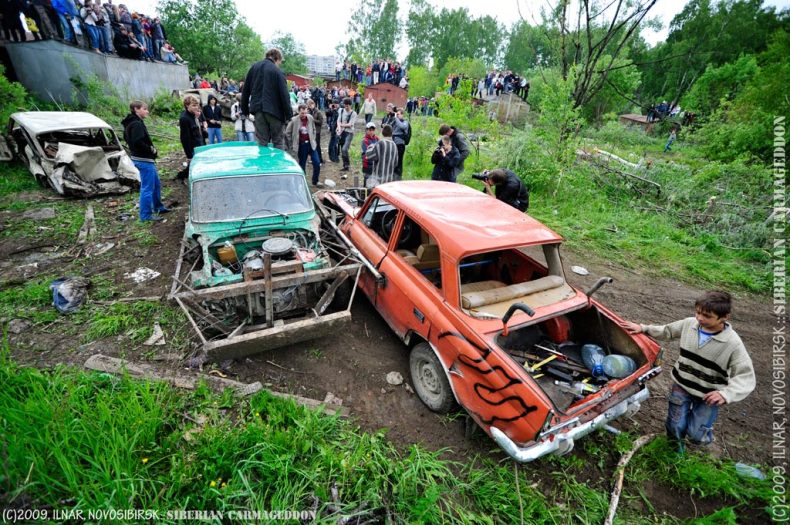|
|
Siberian Carmageddon, Academgorodok, Russia
|
The Russian avant-garde was a large, influential wave of modernist art that flourished in Russia from approximately 1890 to 1930. The term covers many separate, but inextricably related, art movements that occurred at the time; namely neo-primitivism, suprematism, constructivism, rayonism, and Russian Futurism. Notable artists from this era include El Lissitzky, Kazimir Malevich, Wassily Kandinsky, and Marc Chagall. Since 1930s the revolutionary ideas of the avant-garde clashed with the newly emerged conservative direction of socialist realism.
Soviet art produced works that were furiously patriotic and anti-fascist during and after the Great Patriotic War. Multiple war memorials, marked by a great restrained solemnity, were built throughout the country. Soviet artists often combined innovation with socialist realism, notably the sculptors Vera Mukhina, Yevgeny Vuchetich and Ernst Neizvestny.
• Music and dance
Music in 19th century Russia was defined by the tension between classical composer Mikhail Glinka along with his followers, who embraced Russian national identity and added religious and folk elements to their compositions, and the Russian Musical Society led by composers Anton and Nikolay Rubinsteins, which was musically conservative. The later tradition of Pyotr Ilyich Tchaikovsky, one of the greatest composers of the Romantic era, was continued into the 20th century by Sergei Rachmaninoff. World-renown composers of the 20th century included also Alexander Scriabin, Igor Stravinsky, Sergei Prokofiev, Dmitri Shostakovich and Alfred Schnittke.
|
|









